

Amalienborg Castle
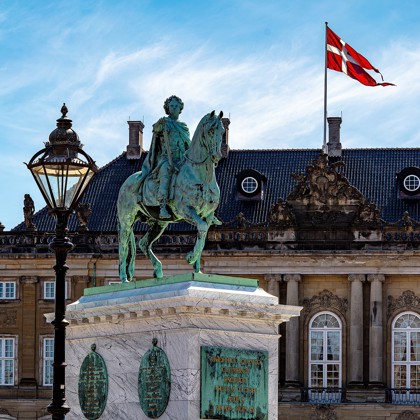
A royal experience
Originally, the site of Amalienborg was occupied by the small pleasure palace Sophie Amalienborg, which burned down in 1689. In 1749, Frederiksstaden was founded as a new district, with Amalienborg as its heart.
The four nearly identical palaces were originally built as private residences for noble families, but after the fire at Christiansborg Palace in 1794, the palaces were taken over by the royal family and have served as the royal permanent residence ever since.
On the palace square stands the equestrian statue of King Frederik V, which many tourists enjoy taking pictures of. It is on this square that thousands of Danes gather to celebrate the royal family's major milestones and to be present when the royal family steps out onto Amalienborg's balconies.
Photo: Jens Ole Jacobsen, The Royal Collection

Here's what to experience at Amalienborg
But Amalienborg is not the only attraction that draws plenty of tourists. The Royal Life Guards, who stand guard out on the square, are also a major sight. Every day at noon, visitors can experience the changing of the Royal Life Guards, a tradition since 1794. Lasting about 45 minutes, the changing of the guard attracts thousands of spectators and is a tribute to the royal heritage and military traditions.
Additionally, the Amalienborg Museum is open to all who want to explore closer Christian X's study, the Fabergé Chamber, and the gala hall, which is still used by the royal family on special occasions.
Note that there is an admission fee to the Amalienborg Museum .
After a day of royal sightseeing, Amaliehaven is the perfect place to relax. Located between Amalienborg and the waterfront, the garden offers a beautiful green oasis with flowers, fountains, and breathtaking views of Copenhagen Harbor. Visit Amalienborg Palace and immerse yourself in a world of royal culture, history, and beauty amidst the vibrant atmosphere of Copenhagen.
Photo: Peter Nørby, The Royal Collection
Amalienborg's four palaces are named:
The official residence of the Royal Family.
Guest residence for Prince Joachim and his family, as well as for Princess Benedikte when they are visiting, and houses the Amalienborg Museum, which is open to all.
The palace is used, among other things, for public tours and the annual royal New Year's reception and banquet.
Residence of Queen Margrethe.

In connection with the sucession of the throne, factual information will be updated continuously on kongehuset.dk.
Amalienborg
Amalienborg is the Royal Family's residence in Copenhagen. The Amalienborg complex consists of four palaces, built around an octagonal courtyard.
Amalienborg is HM The King's winter residence. The Amalienborg complex consists of four palaces, built around an octagonal courtyard, in the centre of which stands the French sculptor J.F.J. Saly’s equestrian statue of Frederik V, the founder of Amalienborg and Frederiksstaden.
The complex was constructed by Frederik V on the occasion of the 300th anniversary of the coronation of Christian I, the first King of the House of Oldenborg. The site for the four palaces was given to four prominent noblemen, A.G. Moltke, Christian Frederik Levetzau, Joachim Brockdorf and Severin Løvenskiold, who committed themselves to building identical palaces, designed by the court architect Nicolai Eigtved.
Amalienborg became the royal residence after Christiansborg Palace burned down in the night between 26 and 27 February 1794. In the course of a few days, the king acquired both the Moltke and Schack Palaces.
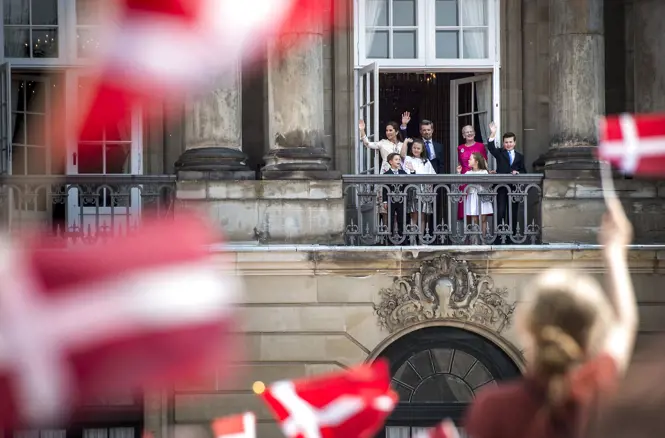
Frederik VIII's Palace
Frederik VIII’s Palace was built during 1750-60 for Baron Joachim Brockdorff. Today the palace is The Royal Family’s private residence.
Frederik VIII’s Palace, or Brockdorff’s Palace, was built during 1750-60 for Baron Joachim Brockdorff. Brockdoff died in 1763, and Lord High Steward A.G. Moltke subsequently acquired the palace. Two years later, he sold the palace to Frederik V. From 1767, the palace served as the Army Cadet Academy.
The cadets had to vacate the palace when Frederik VI wanted his daughter, Princess Vilhelmine, and the heir to the throne, Prince Frederik (VII), to reside there after their wedding. From that marriage’s dissolution in 1837 until Crown Prince Frederik (VII) moved in 1869, the palace housed various members of the Royal Family. The Crown Prince became king in 1906 as Frederik VIII, and the palace bears his name.
In 1934, the palace was restored in order to be used by Crown Prince Frederik (IX) and Crown Princess Ingrid. Queen Ingrid lived in the palace until her death in November 2000.
In 2010, The Royal Couple took over the palace from the State after a thorough interior and exterior restoration, which had begun in 2004. Today, the palace is The Royal Couple’s private residence with administrative and ceremonial functions.
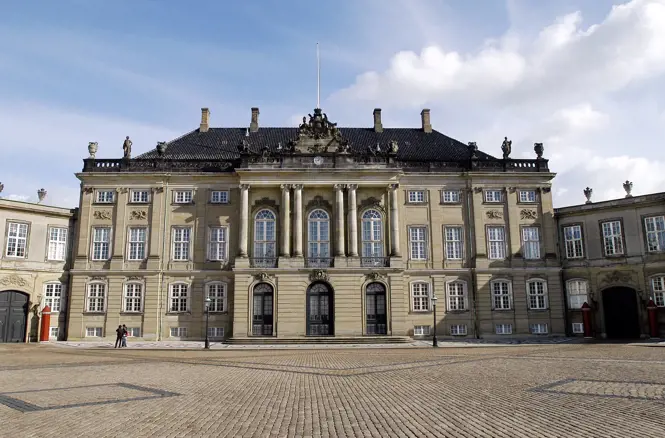
Christian VII's Palace
Christian VII’s Palace has previously belonged to the Lord High Steward AG Moltke. Today the palace is The Queen's representative palace.
Christian VII’s Palace, or Moltke’s Palace, was erected in the years 1750-54 for the Lord High Steward A. G. Moltke. When the Royal Family became homeless after the fire of Christiansborg in 1794, Christian VII bought the palace.
After Christian VII’s death in 1808, Frederik VI used the palace for his Royal Household. The Ministry of Foreign Affairs used parts of the palace in the years 1852-85. From 1885, the palace was used exclusively to accommodate guests and for ceremonial purposes.
However, for short periods of time, the palace housed Crown Prince Frederik (IX) and Crown Princess Ingrid as well as Queen Margrethe and Prince Henrik during the restoration of their respective palaces.
From 1971-75, the palace also housed a small kindergarten for HM The King and HRH Prince Joachim, and a classroom was set up there for them later on.
In 1982, Agency for Palaces and Cultural Properties started an exterior restoration of the palace. From 1993-96, the agency carried out a general restoration of the interior with the support of a number of private sponsors.
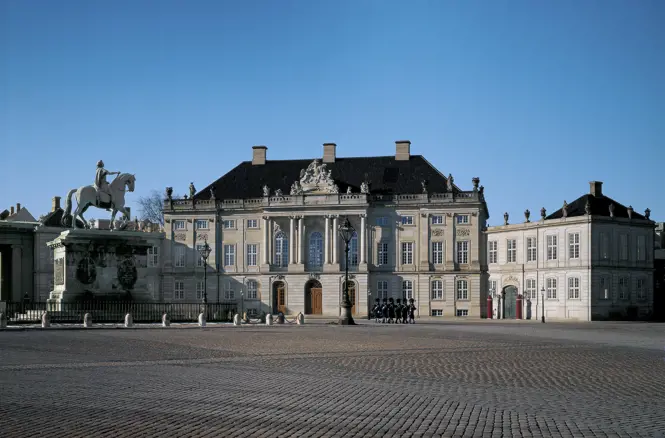
Christian VIII's Palace
The palace was built for Levetzau. Today the palace is residence for HRH Prince Joachim, HRH Princess Marie and HRH Princess Benedikte.
Christian VIII’s Palace, or Levetzau’s Palace, was built in the period 1750-60 for Privy Councillor Christian Frederik Levetzau. Prince Frederik, the Heir Presumptive, bought the palace in 1794 and gave the painter and architect Nicolai Abildgaard responsibility for a modernisation. When the Heir Presumptive died in 1805, his son Prince Christian took over both the palace and the architect. However, Abildgaard died in 1809, and the modernisation came to a halt. In 1839, Prince Christian became King under the name of Christian VIII, and the palace was subsequently called Christian VIII’s Palace.
The King died in 1848 and the Queen Dowager, Caroline Amalie, in 1881. From 1885, the Ministry of Foreign Affairs used parts of the palace but had to move when the it was made the residence of Crown Prince Christian (X) and Princess Alexandrine in 1898.
Ater the death of Christian X in 1947, the palace was placed at the disposal of the Heir Presumptive, Prince Knud.
In the 1980s, the Agency for Palaces and Cultural Properties initiated a much-needed general restoration of the palace. It was fitted up to house, among other things, the residence and reception rooms of the heir to the throne, stores for HM The King’s Reference Library and a museum for the Royal House of Glücksborg, "The Royal Danish Collections, Amalienborg".
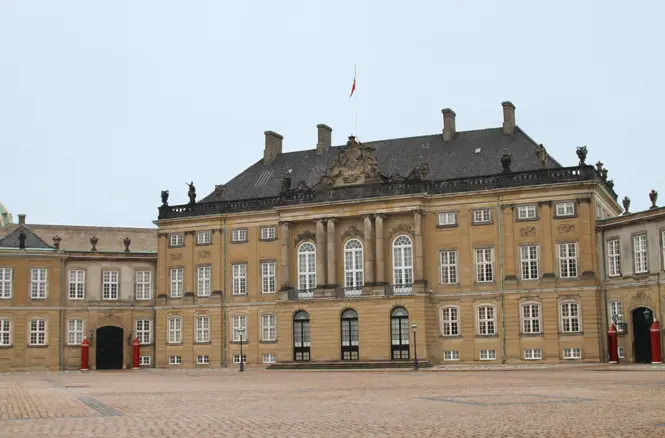
Christian IX's Palace
Queen Margrethe uses Christian IX's Palace as winter residence.
The construction of Christian IX’s Palace, or Schack’s Palace, was commenced in 1750. However, in 1754 Privy Councillor Severin Løvenskjold, who commissioned the building, had to give up in the face of the financial commitments. Countess Anne Sophie Schack took over the palace and passed it on to her step-grandson, Hans Schack.
In 1757, Hans Schack became the son-in-law of Lord High Steward A.G. Moltke, which was highly beneficial to construction work, as Moltke lent his best artists and craftsmen for the completion of the interiors.
After the Christiansborg fire, Schack’s Palace was acquired for Crown Prince Frederik (VI). The palace was connected to Moltke’s Palace by the "Colonnade", a secret passage at the first-floor level supported by eight Ionic columns, allowing the traffic to continue along Amaliegade.
The Crown Prince, who had governed the country for his sick father since 1784, became King under the name of Frederik VI in 1808. After his death in 1839, the palace was, among other things, used by the Supreme Court and the Ministry of Foreign Affairs.
In 1863, the palace was placed at the disposal of Christian IX, after whom the palace is named. "Europe’s father-in-law" lived there until his death in 1906. The home remained untouched until a registration of the estate took place in 1948.
In 1967, the palace was restored for the successor to the throne, Princess Margrethe and Prince Henrik. Queen Margrethe still use the palace as her winter residence.
HM Queen Margrethe's New Year Address
Queen Margrethe has delivered the New Year Address every year on 31 December at 6 pm.
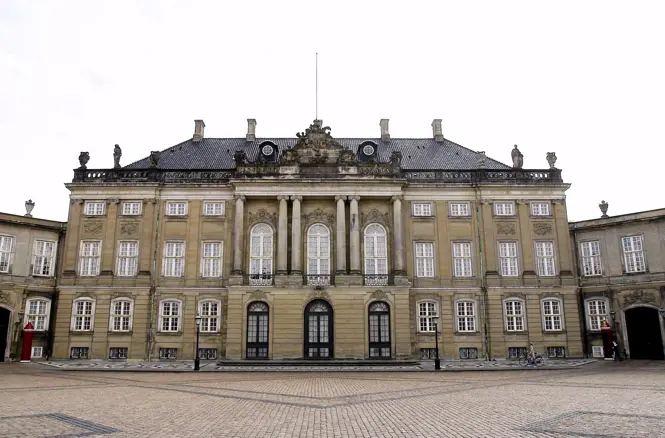
Further information

Amalienborg Palace: All about Danish Royal Blue Palace
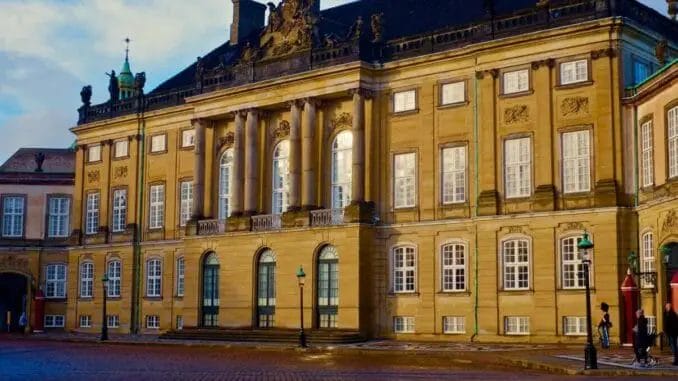
The Danish Royal Palace or Amalienborg Palace is actually a collection of four grand places and is the official home of the Royal Family . The palaces have been given the names of various Danish Kings – Christian VII, Frederick VIII, Christian IX and Christian VII.
Dating to the 18th century, Denmark Amalienborg palace became the official residence of the kings after the previous Christiansborg Palace burned down in 1794. Prior to that, four of the cities most prominent noble families resided here.
The history of Amalienborg Palace
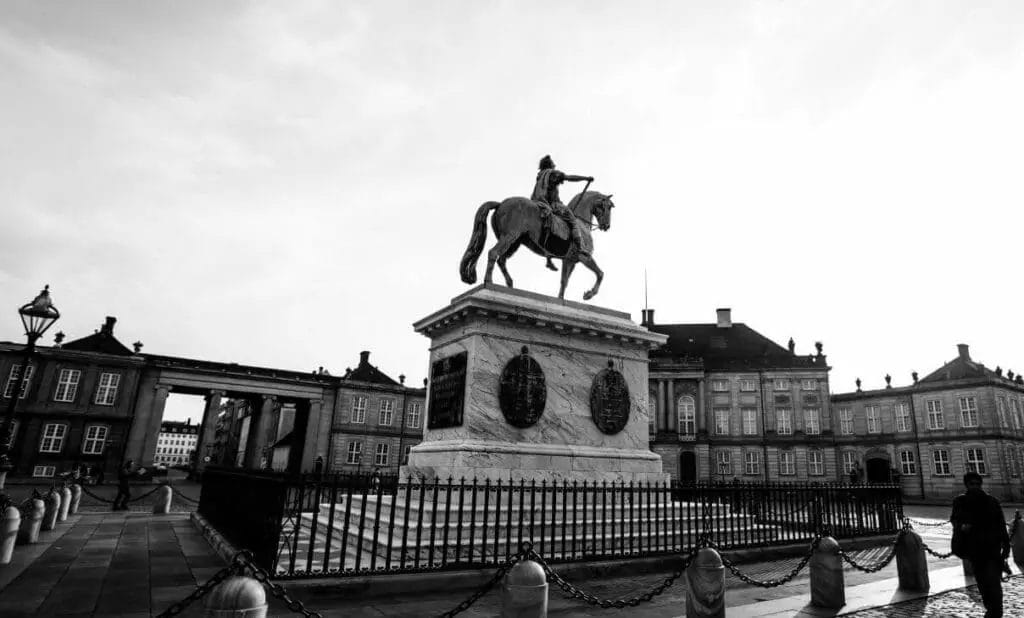
The four palaces were originally built for four noble families, but after the fire the royal family took possession. They renamed it the Amalienborg Palace , after the summer palace that one stood on the same spot. Funnily enough, it also burned down in 1689…
The palaces were built in the newly designed area of Frederiksstaden Quarter and are built in Rocco style. The four buildings, plus all of the others in the new area, were designed or signed off by architect Nicolai Eigtved .
How many buildings are there?
There were previously 4 upper class families residing in 4 individual palaces on the complex.
Christian VII's Palace
Originally known as Moltke's Palace and located on the south west end of the complex, this had been home to a Danish courtier and diplomat Lord High Steward Moltke. He had a crazy large family – 2 wives and over 22 children, so the palace had to offer enough space for the brood. Completed in 1754 it was said to be the most elaborate internally. Nowadays, it is used as an official entertainment building for functions.
Christian VIII's Palace
Levetzau's Palace was the original name for Christian VIII’s Palace. Located on the north west end, it was completed in 1760. Until recently, it was home to the Danish Crown Prince Frederik until recently. It now houses a museum and some royal apartments.
Frederick VIII’s Palace
This palace was completed in 1760 and originally known as Brockdorff’s Palace. Unfortunately, Brockdorff didn’t get long to enjoy his new home. He died in 1763 and Moltke took it over. He sold it and it became an academy for the army. Since the Royals acquired the complex it has been used as the official residence of various members.
Christian IX’s Palace
Known as the Schack Palace originally, Crown Prince Frederik VI eventually took up residence here, and then Christian IX, which gave the palace its name. It is now used as a winter residence for Crown Princess Margrethe and Prince Henrik.
Beautiful inside look – Amalienborg palace interior
The Danish Royal Palace has a stunning interior. From opulent chandeliers to stunning detail on the ceilings, it is every bit the palace environment. Luckily for you, there are tours and visits available. You can see some of the grand entertainment spaces as well as some preserved private rooms. In the museum in particular you can get a real feel for the interior design styles of the royal family that are preserved in time.
Amalienborg palace museum
Located in Christian VIII’s Palace, the museum offers a glimpse into the history of this Denmark Amalienborg Palace. The former home of Christian IX and Queen Louise, the museum offers a glimpse into their lives. The intact personal suites give a fascinating look into the decor of this royal couple. There is even a Faberge Chamber displaying the finest Russian jewelry and artefacts from the 18th and 19th centuries.
Danish Royal Palace Changing of the Guard

The Danish Royal Guard is constantly protecting the complex. If you are visiting the complex make sure to be available at 11.30 to watch the daily procession. The Changing of the Guard leaves the nearby Rosenborg Castle at 11.30 am and arrives at the Amalienborg at 12pm. There are different processions and music used depending on who is resident at the time. Since the family uses the palace largely as a winter residence, you will see the most spectacular parades between September and April.
Amalienborg Palace Copenhagen Entrance Fee
Entry for adults is DKK 95 (€13) , and is free for children under 18. Check this website to buy ticket. Students get discounted tickets for DKK 65 (€8.72) You can also get combination tickets for other palaces in the city.
Amalienborg Palace Opening Hours
Usually, the Palace is open from 10am to 4pm and closed on Mondays. We say usually, because sometimes they like to mix it up a bit. Check the website beforehand for any surprises.
How to get to Amalienborg Palace

Take subway line M3 or M4 to Marmorkirken St. From there, it is about a 5 minute walk to the palace. Alternatively, bus line 26 runs from Tivoli to Sankt Annæ Plads, from where you can walk.
Frequently asked questions about the Danish Royal Palace
Here we have gathered together some of the most asked questions we receive about the Amalienborg Palace.
Where is Amalienborg palace located?
The home to the Danish Royal family is located between the city centre and the harbour in Copenhagen, Denmark.
When was Amalienborg palace built?
The four palaces of Amalienborg were completed in the 18th century and were originally home to local nobility and courtiers, before being taken over by the Royal Family of Denmark in 1794.
How far of a walk from Amalienborg palace to Rosenborg Castle?
It is about a 15 minute walk between the two residences.
How far of a walk from Marmokirken to Amalienborg palace?
It is only a 2 minute walk!
Where does Danish royal family live?
The Danish Royal Family lives – during the winter – in the Amalienborg Palace. During the summer Marselisborg is the current Queen’s residence of choice.
Not only is the Amalienborg Palace an important collection of buildings for the Danish People, it is also a great place to visit during your trip. So make sure to take the time to visit when in Copenhagen. From the stunning square outside, and potentially a glimpse of the changing of the guard, to the internal features, the palace is well worth the visit. Get your tickets here and go!
Could you please explain if the ticket to Amalienborg palace includes entrance to Christian Vlll palace or do we need to a separate ticket?
Leave a Reply Cancel reply
Your email address will not be published.
Save my name, email, and website in this browser for the next time I comment.
Copyright © 2024 | MH Magazine WordPress Theme by MH Themes
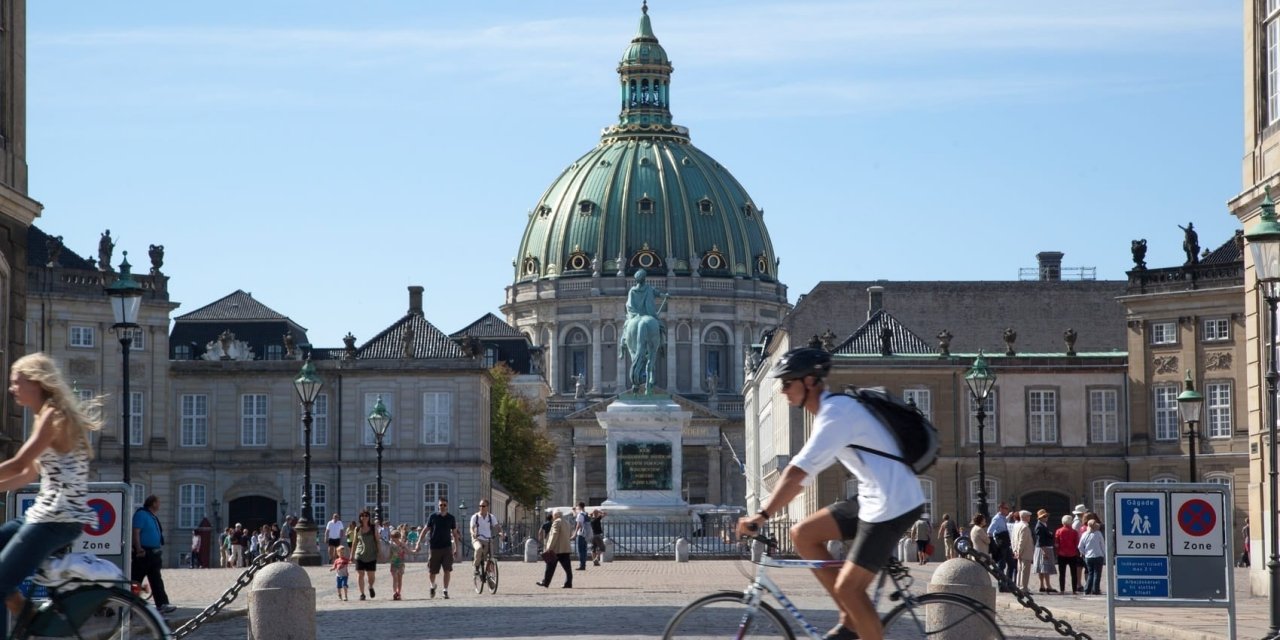
Take a royal tour at Amalienborg Museum
Kim Wyon - VisitDenmark.com
- Map & transport
Amalienborg Museum
Get inspiration about the Royal Family and be surprised by the many Royal Collections.
During the restoration of Christian VIII's palace in 1994 – part of Amalienborg Palace, the ground floor became a museum, which we know today as The Amalienborg Museum.
The museum is an extension of the Royal Collections at Rosenborg Castle and visitors can view artefacts from the Kings of the House of Glücksburg in the period of 1863-1972 and covers four generations of the Family.
The interior exhibits follow the royal generations changes, including reconstructions of Fredrik VIII's private office and jewellery chamber. The museum stages several special exhibitions every year about the Royal family.
> See more about Royal Copenhagen
> See more about Royal Danish Castles
Information
Getting there.
Find routes to this destination.
Coordinates
- Lattitude: 55.684667
- Longitude: 12.592823

Royal Copenhagen
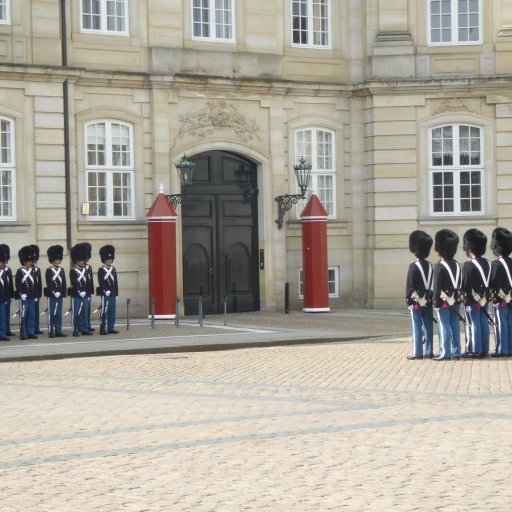
Amalienborg Palace

Frederiksborg Castle
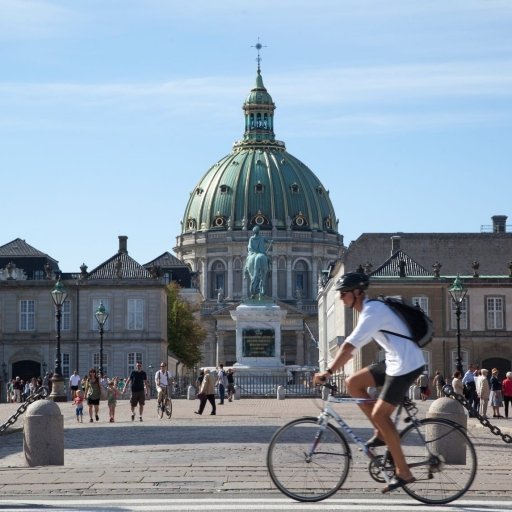
Amalienborg Museum
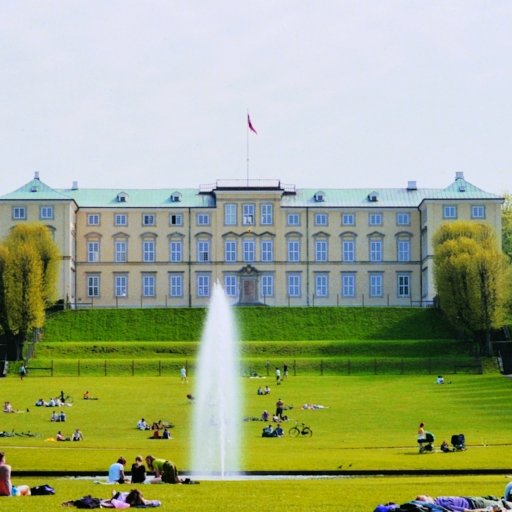
Frederiksberg Palace
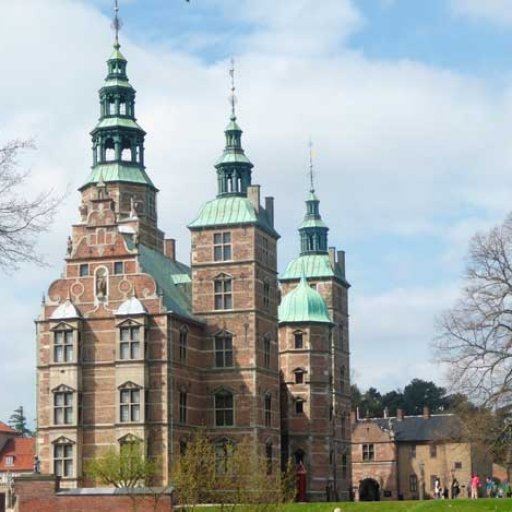
Rosenborg Castle
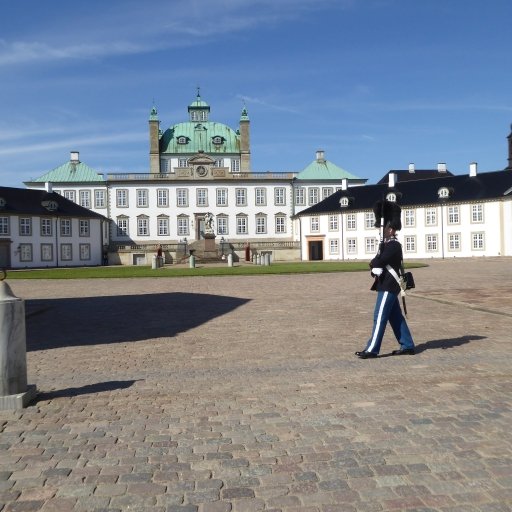
Fredensborg Palace

Christiansborg Palace

Ruins of Absalon`s Castle
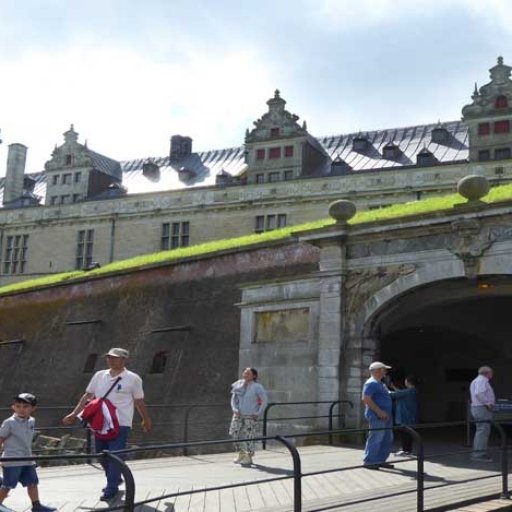
Kronborg Castle in Denmark
Nearby attractions.

The Gefion Fountain
- Nordic Countries
- Inspiration
- Heritage & Culture
- Nature & Activities
- Design & Shopping
- Nordic Vikings
- Seasons & Weather
- Visitnordic
- Privacy Policy
- Terms of Use
- Become a Partner


Amalienborg Castle
Amalienborg Slotsplads 5, 1257 København K Google Maps
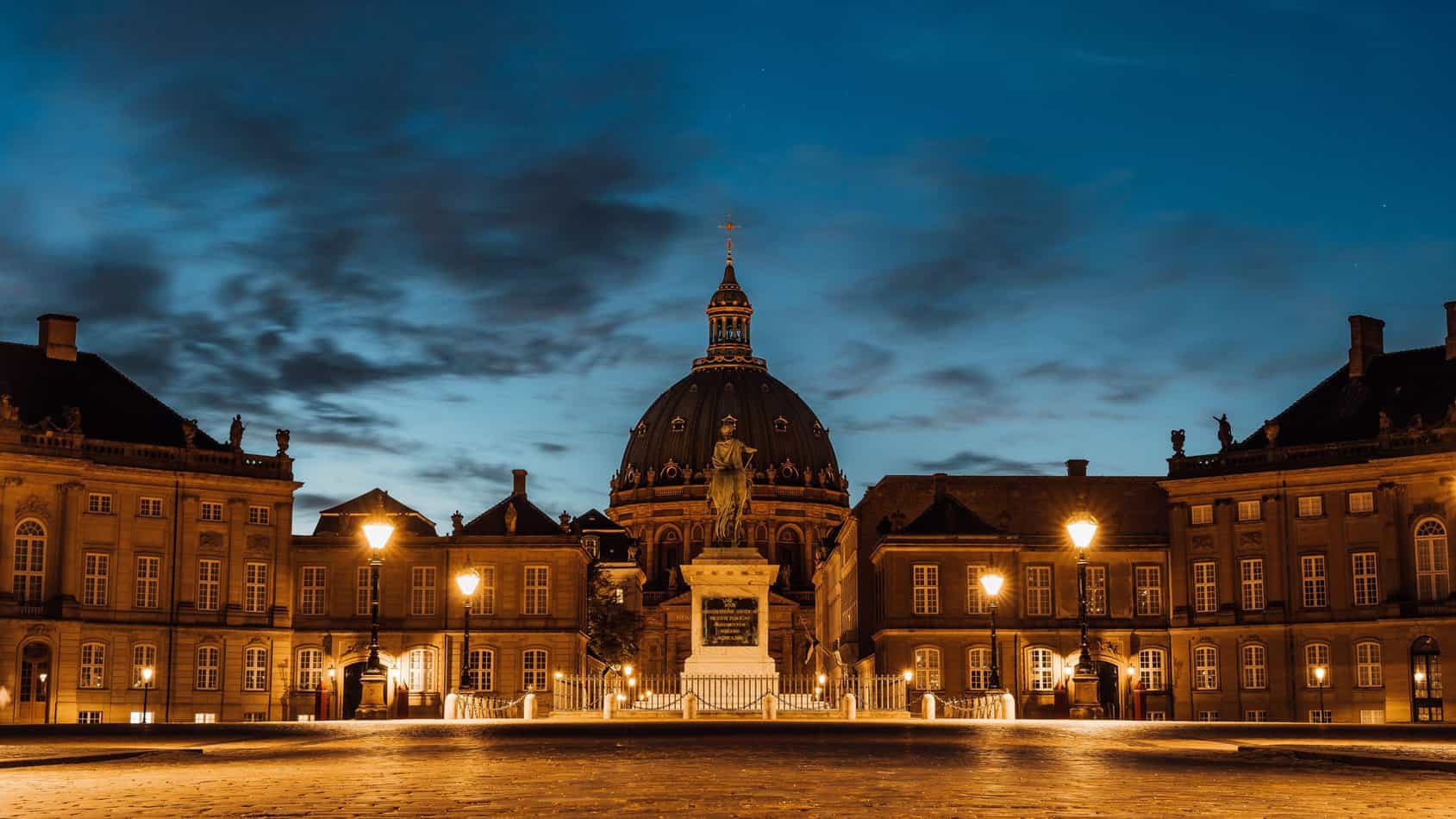
Amalienborg is a palace complex located in the heart of Copenhagen, just a few minutes’ walk from Kongens Nytorv – The King’s New Square. It is the official residence of the Danish royal family, and it consists of four identical Rococo-style palaces arranged around an octagonal courtyard. The palaces were built in the mid-18th century by the Danish architect Nicolai Eigtved, and they were originally intended as homes for four noble families. However, when the previous royal residence, Christiansborg Palace, was destroyed by fire in 1794, the royal family moved to Amalienborg and made it their permanent home. The four palaces are named after their original owners: Christian VII’s Palace (also known as Moltke’s Palace), Christian VIII’s Palace (also known as Levetzau’s Palace), Frederick VIII’s Palace (also known as Brockdorff’s Palace), and Christian IX’s Palace (also known as Schack’s Palace). Each palace has its own distinct interior design and furnishings, reflecting the taste of its former owner. In the center of the courtyard stands an equestrian statue of King Frederik V, who commissioned the construction of Amalienborg. The statue is surrounded by a large fountain, which serves as a popular meeting place for locals and tourists. Today, parts of the Amalienborg complex are open to the public, including the Amalienborg Museum, which is located in Christian VIII’s Palace and features exhibits about the history of the royal family and the palace itself. The changing of the guard ceremony at Amalienborg is a popular attraction for visitors to Copenhagen. The ceremony involves the Royal Guard marching from their barracks at Rosenborg Castle to Amalienborg, where they are met by a new set of guards who take over their duties. The ceremony takes place daily at noon, and it is free to watch. This is very recommendable and something I do myself a couple times a year.
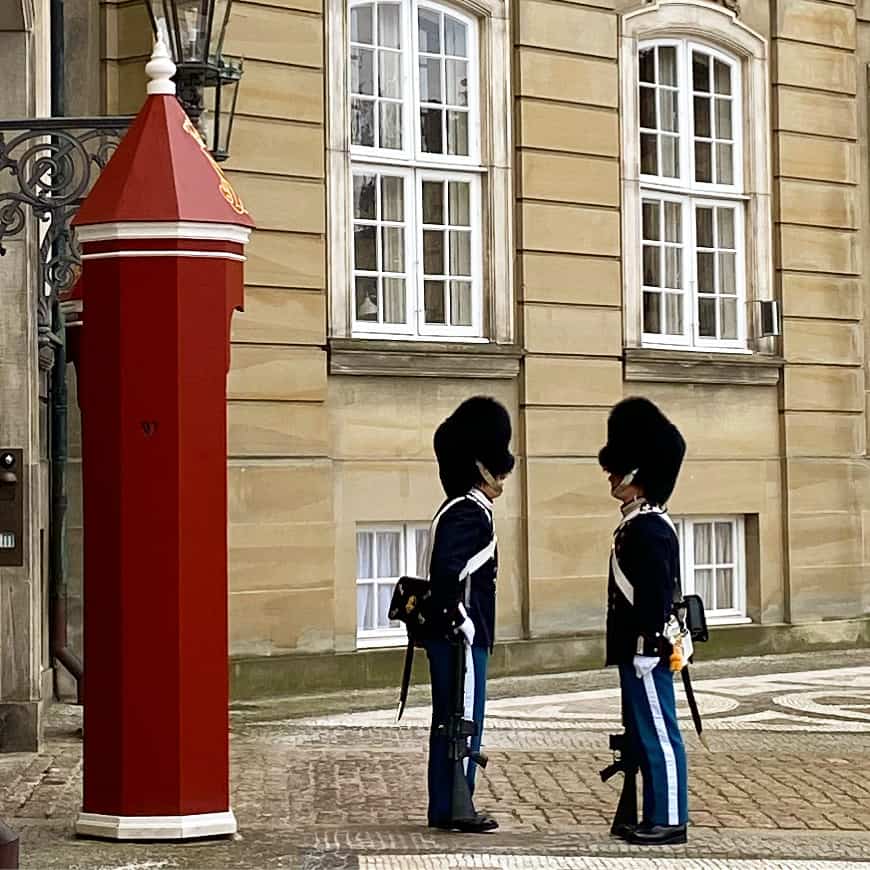
Here are some additional facts and information about Amalienborg:
- Amalienborg is located in the district of Frederiksstaden, which is known for its grand architecture and elegant public spaces. Other notable landmarks in the area include the Marble Church (Frederik’s Church), the Royal Danish Theatre, and the historic Nyhavn canal.
- The palaces at Amalienborg are still used as official residences by the Danish royal family, although not all of the palaces are occupied at the same time. Queen Margrethe II reside in Christian IX’s Palace, while other members of the family live in the other three palaces.
- In addition to the Amalienborg Museum, there are several other museums and galleries in the Frederiksstaden area. These include the Danish Museum of Art & Design, the Royal Danish Arsenal Museum, and the Thorvaldsen Museum, which is dedicated to the works of the Danish sculptor Bertel Thorvaldsen.
Amalienborg is also the site of several important events and ceremonies throughout the year. These include the Queen’s birthday celebration on April 16th, the New Year’s address by the Queen on January 1st, and the annual lighting of the Christmas tree in the courtyard. During major royal events, such as weddings and funerals, the courtyard is often used as a gathering place for the public to pay their respects.
Is the museum accessible for disabled?
Yes, the Amalienborg Museum is accessible for disabled visitors. The museum is located on the ground floor of Christian VIII’s Palace, and there is an elevator to provide access to the museum for wheelchair users and visitors with mobility impairments. The museum also has tactile maps, audio guides, and large print guides available for visitors with visual impairments, and staff members are available to assist with any accessibility needs. Additionally, the museum offers special guided tours for visitors with disabilities upon request. It’s worth noting that the historic nature of the palace complex can make some areas of the museum difficult to navigate for visitors with certain disabilities, such as those with sensory sensitivities or difficulty with stairs. However, the museum staff are trained to provide assistance and accommodations as needed to make the visit as comfortable and enjoyable as possible.
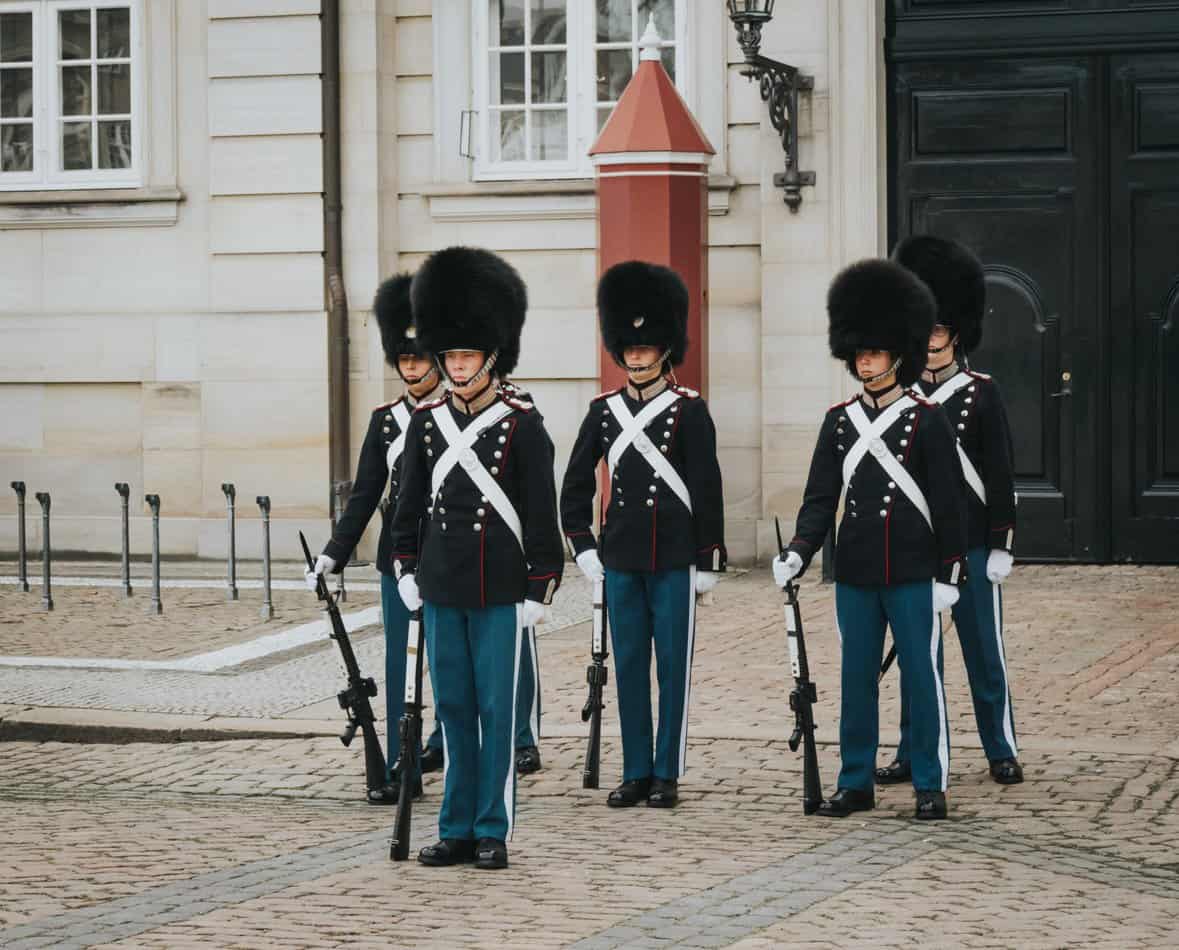
Is the museum suitable for kids?
Yes, the Amalienborg Museum can be a suitable destination for children. The museum offers a variety of exhibits and displays that can be interesting and engaging for kids of different ages. One of the highlights for kids is likely to be the collection of royal treasures, which includes crowns, scepters, and other regalia used by Danish monarchs over the centuries. There are also displays of royal clothing, including dresses and uniforms worn by members of the royal family. In addition to the exhibits, the museum offers interactive elements that can be fun for kids. For example, there is a treasure hunt activity that challenges visitors to find hidden objects throughout the museum, and there are touchscreens and other interactive displays that allow visitors to learn more about the history of the palace and the royal family. It’s worth noting that some of the exhibits may be more interesting for older kids, as the museum focuses primarily on the history and art of the royal family rather than on hands-on activities or play areas. However, with parental guidance and support, many children can find the exhibits and displays at Amalienborg Museum to be both educational and entertaining.
Opening hours:
The Amalienborg Museum is typically open seven days a week, although the exact hours of operation may vary depending on the time of year. The opening hours can be found below, however, it’s important to note that hours of operation are subject to change, and it’s always a good idea to check the official Amalienborg Museum website or contact the museum directly to confirm the current hours and any special closures or events that may be taking place.
- January 2 to June 30: Daily from 10:00 a.m. to 4:00 p.m.
- July 1 to August 31: Daily from 10:00 a.m. to 5:00 p.m.
- September 1 to December 31: Daily from 10:00 a.m. to 4:00 p.m.
When is the best time to visit?
The best time to visit the Amalienborg Museum largely depends on your personal preferences and interests. However, here are some factors to consider when planning your visit:
- Weather: Copenhagen’s weather can be quite chilly and damp in the winter months, so if you prefer milder temperatures and longer days, you may want to plan your visit for the spring or summer months. However, keep in mind that these months can also be more crowded with tourists.
- Events: If you’re interested in attending special events or ceremonies at Amalienborg, such as the changing of the guard or the lighting of the Christmas tree, you may want to plan your visit around these occasions. Be sure to check the museum’s website or contact them directly for information about upcoming events.
- Crowds: As a popular tourist destination, Amalienborg can get quite crowded, especially during peak travel seasons. If you prefer to avoid crowds, you may want to plan your visit for a weekday, or consider visiting during the museum’s off-season (January through March).
Recent Posts
National Gallery of Denmark - SMK
The National Gallery of Denmark, also known as the Statens Museum for Kunst (SMK), is the largest art museum in Denmark
Rosenborg Castle
Visit the beautiful 400 year-old castle built by King Christian IV. The castle houses the Royal Danish Collection of art and antiquities.
- The official guide to Copenhagen
- Beyond Copenhagen
- Copenhagen Card
- See & do
- Eat & drink
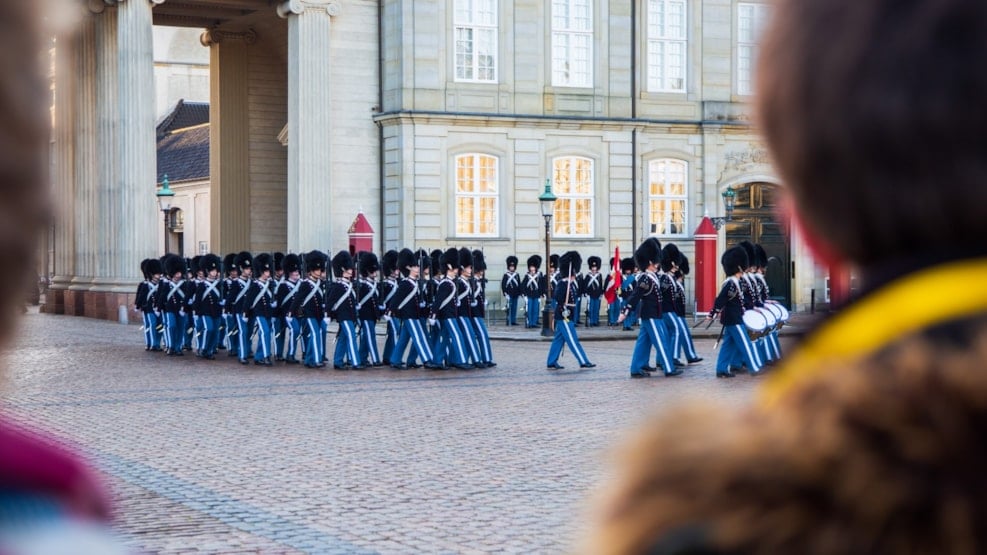
Changing of the Royal Guards at Amalienborg Palace
Experience a royal tradition up close Changing of The Royal Guard
Amalienborg is famous for its Royal Guard, called Den Kongelige Livgarde. Every day you can experience the changing of the guards, as they march from their barracks in 100 Gothersgade by Rosenborg Castle through the streets of Copenhagen and end up at Amalienborg, where the changing of the guard takes place at 12:00 noon.
Surrounding the palace square with its statue of King Frederik V from 1771, Amalienborg is made up of four identical buildings. These are Christian VII’s Palace (also known as Moltke's Palace, used as a guest residence), Frederik VIII’s Palace (also known as Brockdorff’s Palace, home of the Crown Prince family), Christian IX’s Palace (also known as Schack’s Palace, home of the Queen) and Christian VIII’s Palace (also known as Levetzau' Palace, used as a guest palace for Prince Joachim and Princess Benedikte). It’s in this building you’ll find Amalienborg Museum.
Source: Forsvaret
TRAVEL TIP: With a Copenhagen Card in hand you get free admission to Amalienborg and over 80 attractions as well as free public transportation in the whole capital region.
Get Social :
Useful links.
- Web Accessibility
- Editorial policy
Other sites
- Wonderful Copenhagen
- Cruise Copenhagen
- Copenhagen Convention Bureau
- Travel Trade
- Intl. press room
DANISH ARCHITECTURE CENTER
- Plan your visit
- Kids and families
- Design Shop
- Group tours
- On your own
Amalienborg: Home of the Royal Family
Originally, amalienborg was built as palaces for four noble families. but when the royal palace christiansborg burned down in 1794, the danish royal family relocated here – and they have been living in these fine rococo buildings ever since..
Amalienborg is the architectural and symbolic center of the Frederiksstaden neighborhood. The quarter was established to celebrate the 300th anniversary of the Oldenburg royal house in 1748. The purpose of the development was to honor the absolute monarch, Frederick V, while at the same time fulfilling the nobility’s need for palaces in the capital. For the same reason, the palace complex was originally city palaces for noble families, and only when Christiansborg burned in 1794 did Amalienborg become the residence of the royal family.
Four Palaces and a Palace Square
The architect Nicolai Eigtved was responsible for the planning and architectural design of both the new neighborhood and the palaces. The centerpiece of Eigtved’s plan is the octagonal palace square, surrounded by Schack’s Palace (Christian IX’s Palace), Moltke’s Palace (Christian VII’s Palace), Levetzau’s Palace (Christian VIII’s Palace), and Brockdorff’s Palace (Frederik VIII’s Palace). All the palaces are named after their developers. In the middle of the palace square, where Amaliegade and Frederiksgade intersect, stands the French sculptor J.F.J. Saly’s equestrian statue of Frederick V – the founder of Amalienborg and Frederiksstaden.
Equestrian Statue Facing the Church
The inspiration for Amalienborg Palace Square came from the royal places of honor known from France. The four nearly identical palaces round off and close the corners of the square, and at the same time, the four street exits give a sense of the square as part of a larger context. In other words, the square’s balanced order and harmony express the very state ideal of absolutism. The equestrian statue of Frederick V, riding towards the Marble Church, also signals the fundamental absolutist idea: The king is God’s living image on earth.
When the royal family acquired Amalienborg in 1794, a colonnade designed by C.F. Harsdorff was erected across Amaliegade as a connecting passage between Moltke’s and Schack’s palaces. Amalienborg is one of Europe’s finest Rococo complexes and gets its name from the pleasure palace Sophie Amalienborg, which previously stood on the site.
Near Amalienborg
The Frederiksstaden, where Amalienborg is located, is filled with pompous buildings. Here you can experience the magnificent Frederik’s Church – best known as the Marble Church. The church is one end of the axis that runs via Amalienborg Palace Square, through the small park of Amaliehaven, and ends at the Opera on the opposite side of Copenhagen Harbor. But the architecture also has more modern expressions nearby. Among other things, Skuespilhuset – The Royal Playhouse is located here, inviting everyone to enjoy the harbor’s possibilities. At Toldbodgade 13, you will find a slightly less grandiose house that elegantly manages to both stand out and fit in among the old neighboring buildings in the street.
Copenhagen, Inner City
Nicolai eigtved, more architecture, børsen: copenhagen’s historic stock exchange, bispebjerg crematorium: respecting the deceased, sankt hans torv: church, coffee, and coolness.
Urban spaces
Mimerspark: A Former DSB Area Goes Green
News about architecture? Sign up here

Which Copenhagen Castle to visit
The Danish Monarchy is one of the oldest in the world. Thus, it’s no surprise that Denmark’s capital city: Copenhagen, is stuffed full of castles and palaces. However if you have limited time in the city you may be wondering which is the best Copenhagen castle to visit…
Amalienborg Palace, Rosenborg Castle and Christiansborg Palace are all worth your time and I’ve reviewed each below:
Christiansborg Palace –
The tiny island of Slotsholmen has been home to a Copenhagen castle or palace for over 800 years. The modern-day Christiansborg Palace was constructed in 1907 after a horrific fire burnt down its predecessor.
Although the Danish royal family relocation to Amalienborg Palace in 1794, reception rooms at Christiansborg Palace still provide the backdrop for many royal functions and events. More than this, the palace has been home to the Danish Parliment and the countries Supreme Court since the early 1800’s.
Because of this, Christiansborg Palace is perhaps the royal attraction that has the most things to see. A combination ticket, priced at 150 DKK (€20) , will grant you entry to the Royal Reception rooms, ruins, kitchen and stables.
As a horse owner/lover, the lure of being able to tour the Royal stables meant that Christiansborg was the royal attraction I was most excited to visit. However, upon my arrival, I was disappointed…
Despite the advertised opening hours (which I triple checked online) BOTH times I visited Christiansborg, it was closed!! There wasn’t even anyone around to tell me when the palace would actually be open. For this reason, I’d perhaps avoid pinning your hopes on a Christiansborg palace tour, especially if visiting in winter as I did!
(Although I did get to see some Royal Horses training outside the palace, so my trip to the palace wasn’t a complete waste)!
Find out more about Christiansborg Palace on the VisitCopenhagen Website
Amalienborg Palace –
As mentioned above, Amalienborg Palace Cophenhagen is the current official residence of the Danish Royal family. Totally unique to most other European palaces, Amalienborg Palace is actually made up of four identical buildings that surround an octagonal courtyard, the centrepiece of which is a statue of King Frederik V.
The classical facades of the buildings are simply beautiful. Whatsmore, there’s something magical about the symmetry and repetition of Amalienborg Palace, it certainly left me speechless!
In terms of things to see, two of the four buildings at Amalienborg Palace are open to visitors. They confusingly have very similar names:
1) Christian VIII palace –
This building is home to the Amalienborg museum (Amalienborgmuseet) which can be toured for the very reasonable price of 75 DKK (€10) . It comprises mostly of reproduced studies of the more recent Danish Kings. In this way, the museum is rather unique as it recreates the personal living spaces of Danish monarchs and shows off more recent decorative styles.
Personally, however, I found the small rooms to be a little too crammed with artefacts. At times I didn’t quite know where to look! None the less, the museum is very interesting to visit, and its small size is great if you’re short on time in Copenhagen!
2) Christian VII palace –
If you’re more prepared than I, you can book in advance to tour representation rooms in the ‘Christian VII’ building. This Amalienborg palace tour is guided, and thus a little more expensive – prices start at 95 DKK.
None the less, the price is more than worth it as you’ll see the palaces magnificent rococo style staterooms which make Amalienborg perhaps the most beautiful Danish royal palace.
BOOK YOUR TOUR OF AMALIENBORG PALACE HERE
Rosenborg Castle –
Differing from the other palaces in Copenhagen, Rosenborg Castle gives an insight into Denmark’s period of ‘Absolute Monarchy’ between the 17th and 19th century. Built in the early 1600’s, by Christian IV, Rosenborg Castle is a fantastic display of Dutch Renaissance architecture, meaning its exterior very much reminded me of a Disney castle!
The Rosenborg Castle entrance fee is 110 DKK . For this price you can tour the castles well-preserved royal rooms that are a celebration of the pomp and pageantry of the period – even if they are a little too overpowering for my taste! Among the main attractions is the Knights’ Hall (which contains the coronation thrones and three life-size silver lions).

BOOK YOUR TICKETS TO ROSENBORG CASTLE HERE
The Rosenborg Castle gardens are also beautiful and the perfect place to stop for a picnic in summer months, or to simply walk through. In this way, if you’re looking for a Unique Copenhagen Castle, then I think Rosenborg takes the edge!
I hope my quick analysis of Christiansborg Palace, Amalienborg Palace and Rosenborg Castle Copenhagen, helps you choose which of Copenhagen’s Castles to visit!
Personally, I’d put Amalienborg palace forward as the top Copenhagen Castle. As it has the most impressive rooms, plus it’s not every day you get to visit a Royal home still in use. This said, you’d be silly not to take a quick walk past the stunning Rosenborg castle, even if just to take in its fairy-tale exterior.
Looking for more information on Copenhagen? CHECK OUT MY GUIDE OF THE TOP THINGS TO DO!
Like this post on ‘Which Copenhagen Castle to visit’? PIN IT FOR LATER:
You may also enjoy:, what to do in dubrovnik in one …, bucket list day trip to lake bled …, 19 comments.
Thank you! This was very useful, not just for the time factor but money-wise I think I can only handle one tour. So I think Amalienborg it is 🙂
Happy continued travels! C
PS: Rosenburg’s gardens are free to visit, are they?
Amalienborg is an excellent choice! And yes the gardens are 100% free to visit, I’d definitely recommend going 🙂
Copenhagen reminds me of German cities. Admiring architecture and exploring monuments is our favourite thing to do while travelling and I wouldn’t like to miss any of these.
I’d love to visit the medieval castles in Germany, top of my list for sure! And I agree with you, I would definitely recommend visiting all three of the palaces/castles in Copenhagen if you have time
Thanks for going into detail about each of these 3 royal attractions – they look lovely to visit! That’s really disappointing that both times you visited Christiansborg Palace it was closed 🙁 I do love the look of the Rosenborg Castle- you’re right, it does look like a Disney castle!
It was very disappointing! Thankfully I could visit and enjoy the other two attractions though 🙂
I think we would be more into Rosenberg as it looks more medieval and like a palace. I had no idea that the danish monarchy is amongst the oldest in the world. We really enjoy touring gardens as well. I like the statue of king Fredrick V. Hopefully we can visit Copenhagen some day.
I feel you! I had no idea Denmark even had a monarchy before visiting (embarrassed face) – I hope you get to visit one day x
I like Rosenberg Castle best. It looks different with its architecture style. Others, in my opinion, look just like any other buildings around Europe. Thank you for the review. So, whenever we get a chance to go to Denmark, I know which palace that needs to be put in the itinerary.
Rosenborg castle is certainly Unique!! Thanks for reading 🙂
Wow! All three of these royal palaces look absolutely mind blowing! But, I must admit the Rosenburg Castle would be my top pick. I’ve never been to Disneyland (sad, I know), but from what I’ve seen online, the resemblance is definitely there. Love those gardens, too!
Agreed! I imagine the gradens are even better in summer
Your analysis has made me more speechless. I can’t seem to favorite any of the royal houses. But I know Copenhagen must feel royal and magical, I mean what city has many royal houses. Visiting these royal houses would take me back to ages of strict monarchy and it’ll be nice to see in motion what it was like back then.
I totally agree with you it’s magical to feel like you’re in another world with all the beautiful buildings 🙂
Wow, I didn’t know about these attractions. For a long time I have been wanting to visit Copenhagen. These kind of places are something I would absolutely enjoy. I should bookmark this for my future travel plans.
These are all very cool! Christian VIII palace would be my favorite, I Think because I like that they recreate the living space. I’m always intrigued by those things. Too bad the stables were closed at Christiansborg Palace. They should update their website! Nice photos and very amazing castles. Thanks for the descriptions of what each offers to help travelers who are short on visit time!
intrigues me too!! Its definitely a fab place to visit – Thanks for reading and taking the time to leave such a lovely comment 🙂
Just amazing experiences
Amazing photos!
Leave a Reply Cancel reply
Your email address will not be published. Required fields are marked *
This site uses Akismet to reduce spam. Learn how your comment data is processed .
Privacy Policy

Virtual tour
Visit the museum from home with our virtual tour .
- Interior and objects
- Collection history
- Model of Amalienborg
- The Royal Representation Rooms
- Portraits of royal children

Pick a floor

IMAGES
VIDEO
COMMENTS
Below, you'll find information about access and disability facilities at the museum. Take a virtual tour of the palace here. If you have special needs, you're welcome to notify us in advance so our staff can be prepared to assist you. You can call us at +45 2189 6107.
Amalienborg is famous for its royal guard, known as The Royal Life Guard. Every day, you can watch the changing of the guards as they march from their barracks by Rosenborg Castle through the streets of Copenhagen to Amalienborg, often accompanied by music. The changing of the guard takes place at noon. Amalienborg is made up of four identical ...
This is one of the four palaces, that Amalienborg consists of. You can see the special exhibition 'Frederik X: King of Tomorrow' here at the museum until September 8th 2024. See our opening hours here. The Amalienborg Museum is part of the Royal Danish Collection, which also includes Rosenborg and Koldinghus. Visit the interiors of former ...
Buy a ticket. Buy a ticket by selecting an entrance ticket below. Once you have selected your ticket, select the date and time of arrival in the calendar view. Buy a ticket to Amalienborg Museum. We recommend that you buy a ticket online before visiting. Print the ticket or show it on your smartphone.
3,055 reviews. #38 of 462 things to do in Copenhagen. Architectural BuildingsHistory Museums. Closed now. 10:00 AM - 5:00 PM. Write a review. About. Amalienborg offers two royal experiences that let you get close to royal history through the last 250 years. In Christian VIII's Palace the museum offers an insight into royal life past and present.
Located between Amalienborg and the waterfront, the garden offers a beautiful green oasis with flowers, fountains, and breathtaking views of Copenhagen Harbor. Visit Amalienborg Palace and immerse yourself in a world of royal culture, history, and beauty amidst the vibrant atmosphere of Copenhagen. Photo: Peter Nørby, The Royal Collection
Amalienborg is famous for its Royal Guard, called Den Kongelige Livgarde. Every day you can experience the changing of the guards as they march from their barracks in 100 Gothersgade by Rosenborg Castle through the streets of Copenhagen and end up at Amalienborg, where the changing of the guard takes place at noon. Visit the Amalienborg Museum
Amalienborg became the royal residence after Christiansborg Palace burned down in the night between 26 and 27 February 1794. In the course of a few days, the king acquired both the Moltke and Schack Palaces. The Royal Family and Queen Margrethe at the balcony on the occasion of HM The King's 50th birthday.
Amalienborg (Danish pronunciation: [æˈmɛˀljn̩ˌpɒˀ]) is the official residence for the Danish royal family and is located in Copenhagen. Frederick VIII's palace complex has four identical Classical façades, effectively four palaces, with Rococo interiors, laid around an octagonal courtyard (Danish: Amalienborg Slotsplads).At the centre is a large equestrian statue of Frederick V.
amalienborg_palace_changing_guards. The Danish Royal Guard is constantly protecting the complex. If you are visiting the complex make sure to be available at 11.30 to watch the daily procession. The Changing of the Guard leaves the nearby Rosenborg Castle at 11.30 am and arrives at the Amalienborg at 12pm. There are different processions and ...
Situated between the city and the harbour, Amalienborg is a major work of Danish architecture designed by the architect Nicolai Eigtved in the 1750s. Four palaces surround Amalienborg Palace Square, with its equestrian statue of King Frederik V. The palaces were originally built as residences for four high-ranking aristocrats, but when the old ...
Plan your visit to Christian VIII's Palace. The palace houses the museum, The Royal Danish Collection - Amalienborg, which is the museum of the Danish Royal Family. The museum explores the history of the Danish monarchy over the past 150 years, and introduces visitors to the daily life of The Royal Family today. Christian VII's Palace ...
During the restoration of Christian VIII's palace in 1994 - part of Amalienborg Palace, the ground floor became a museum, which we know today as The Amalienborg Museum. The museum is an extension of the Royal Collections at Rosenborg Castle and visitors can view artefacts from the Kings of the House of Glücksburg in the period of 1863-1972 ...
March 3, 2020 by Henk Bekker. The museum in Amalienborg Palace is a popular sight to see in Copenhagen - a visit covers the royal history of the Danish constitutional kings and queens. The Amalienborg Palace complex in Copenhagen is the official residence of the Danish monarch. Two of the four Amalienborg rococo palaces are open to visitors.
Amalienborg Castle. Amalienborg Slotsplads 5, 1257 København K Google Maps. Amalienborg by night. Amalienborg is a palace complex located in the heart of Copenhagen, just a few minutes' walk from Kongens Nytorv - The King's New Square. It is the official residence of the Danish royal family, and it consists of four identical Rococo-style ...
Closed now. 10:00 AM - 5:00 PM. Write a review. About. Amalienborg offers two royal experiences that let you get close to royal history through the last 250 years. In Christian VIII's Palace the museum offers an insight into royal life past and present. You can see the private chambers of former kings and queens and, on most days, there is ...
Experience a royal tradition up close Changing of The Royal Guard. Amalienborg is famous for its Royal Guard, called Den Kongelige Livgarde. Every day you can experience the changing of the guards, as they march from their barracks in 100 Gothersgade by Rosenborg Castle through the streets of Copenhagen and end up at Amalienborg, where the changing of the guard takes place at 12:00 noon.
Castle. Originally, Amalienborg was built as palaces for four noble families. But when the royal palace Christiansborg burned down in 1794, the Danish royal family relocated here - and they have been living in these fine Rococo buildings ever since. Amalienborg is the architectural and symbolic center of the Frederiksstaden neighborhood.
The history of Amalienborg. Amalienborg was built in the 1750s as the midpoint of the surrounding Frederiksstaden quarter, which comprises the strip between Bredgade Street and the quay, stretching from Sankt Annæ Square to the Kastellet fort. The four palaces were originally built as homes for the nobility, but were taken over by the Royal ...
Christiansborg Palace -. The tiny island of Slotsholmen has been home to a Copenhagen castle or palace for over 800 years. The modern-day Christiansborg Palace was constructed in 1907 after a horrific fire burnt down its predecessor. Although the Danish royal family relocation to Amalienborg Palace in 1794, reception rooms at Christiansborg ...
The Fabergé Chamber. The Antechamber. The Dynasty - The Genealogical table room. Frederik IX's study. Christian IX's study. Queen Louise's salon. The Garden Room. The Dining Room. Christian X's study.